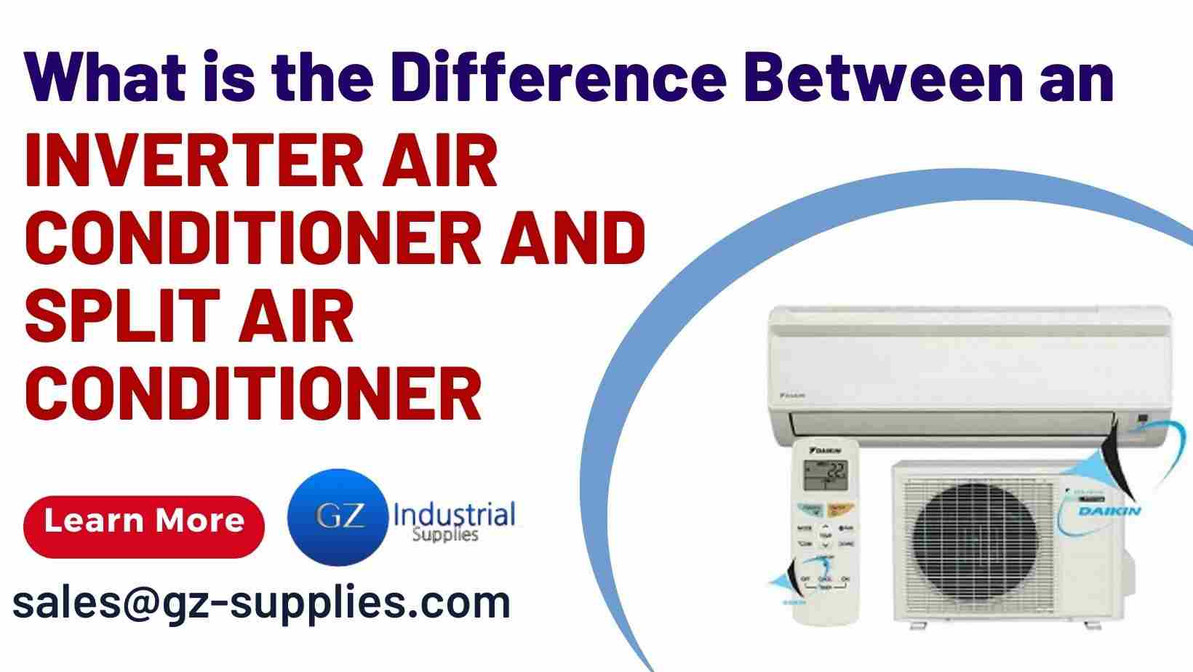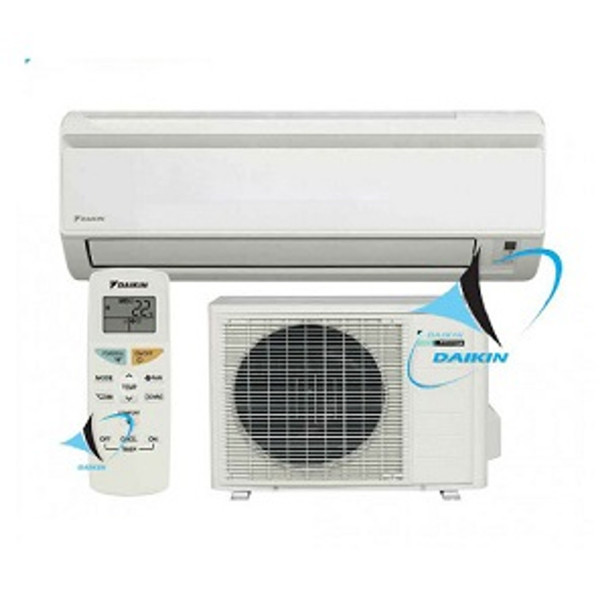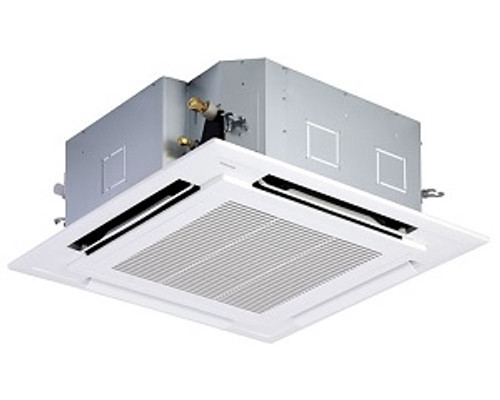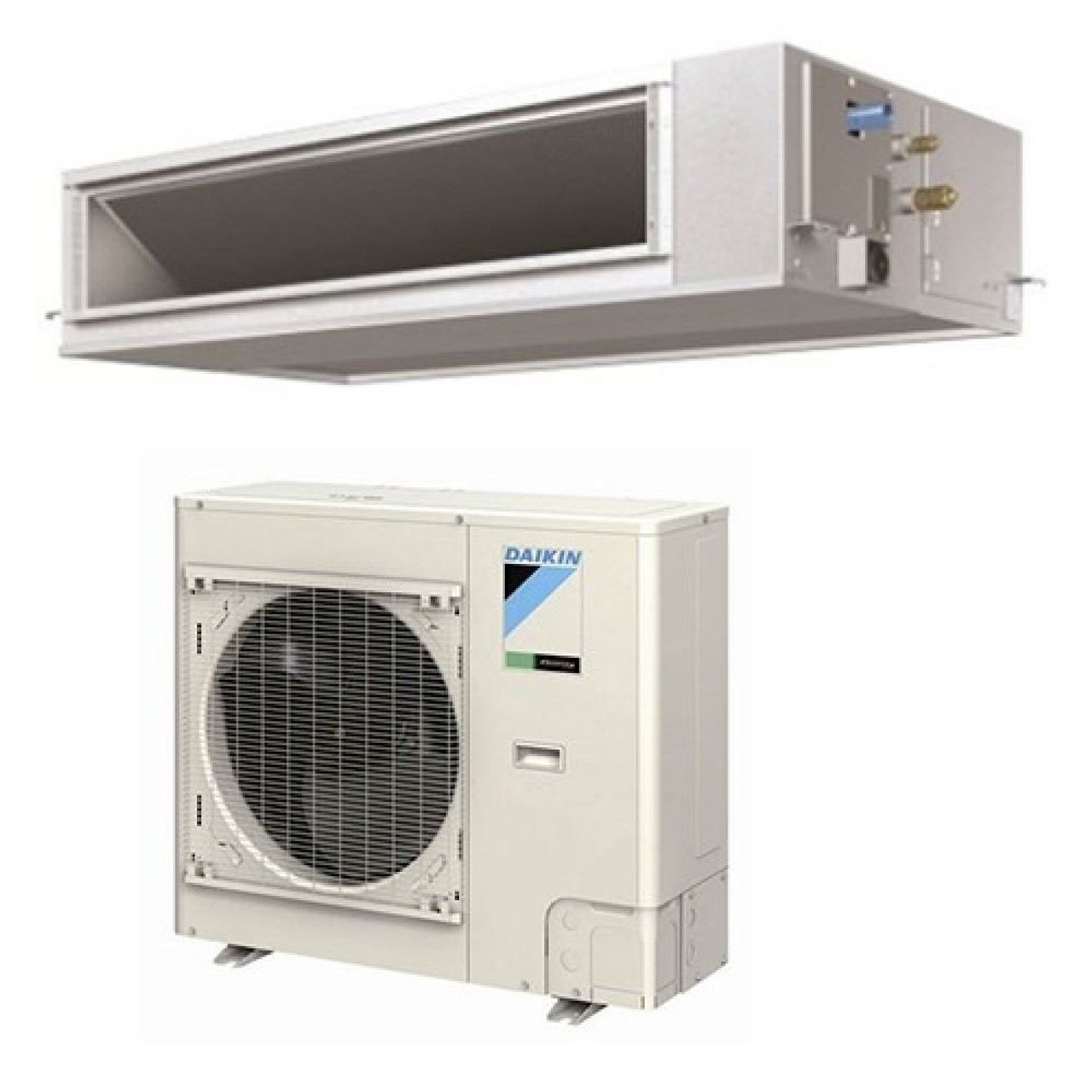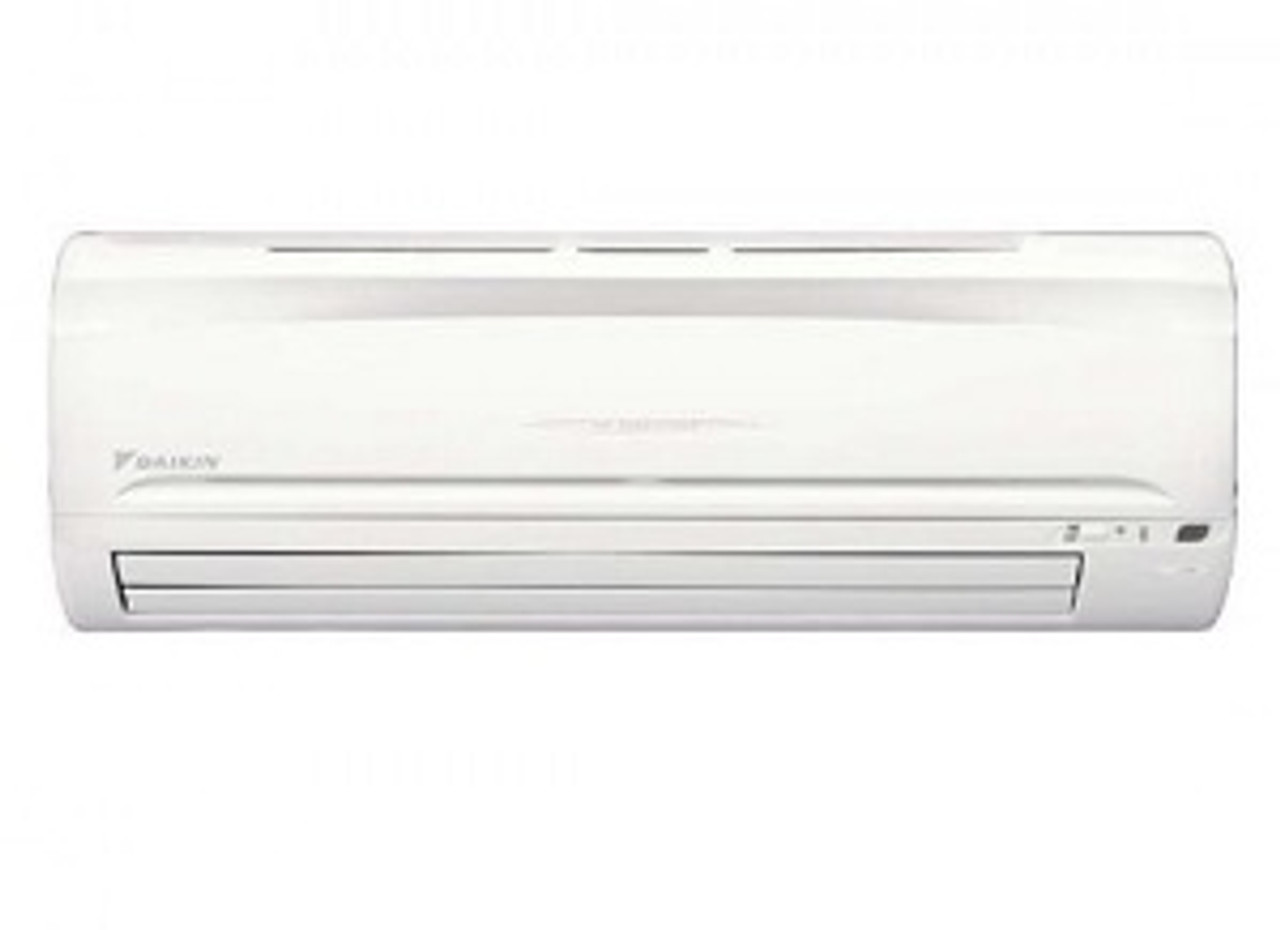What is the Difference Between an Inverter Air Conditioner and Split Air Conditioner
When it comes to choosing an air conditioner for your home or office, you may come across various types and models available in the market. Two popular options are inverter air conditioners and split air conditioners. While they both serve the purpose of cooling your space, there are significant differences between the two that can impact your comfort, energy efficiency, and overall experience.
Inverter air conditioners and split air conditioners utilize different technologies and offer distinct features. Understanding these differences is crucial in making an informed decision about which type of air conditioner is best suited for your needs. In this article, we will explore the differences between inverter air conditioners and split air conditioners, allowing you to make an educated choice when it comes to cooling your space effectively and efficiently.
Understanding Inverter Air Conditioners
A. Explanation of inverter technology
Inverter technology is the key feature that sets inverter air conditioners apart from traditional fixed-speed air conditioners. The core principle behind inverter technology is the ability to adjust the compressor speed based on the cooling needs of the space. Unlike fixed-speed air conditioners, which operate in an on-off cycle, inverter air conditioners maintain a consistent temperature by continuously modulating the compressor speed.
The inverter technology works by using a variable frequency drive (VFD) to control the compressor motor. This VFD converts the incoming alternating current (AC) to direct current (DC) and then converts it back to AC at the desired frequency. By controlling the frequency and voltage, the compressor motor's speed can be adjusted to match the cooling demands of the room.
B. How inverter air conditioners regulate compressor speed
The compressor in an inverter air conditioner adjusts its speed based on the cooling load required to maintain the set temperature. When the air conditioner is turned on, the compressor starts at a low speed to reach the desired temperature quickly. As the room temperature approaches the set temperature, the compressor slows down to a lower speed to maintain the temperature consistently.
In contrast, traditional fixed-speed air conditioners operate at maximum capacity until the set temperature is reached, and then they turn off. When the temperature rises again, they start at full speed to cool the room and repeat the on-off cycle. This constant on-off cycling not only consumes more energy but also results in temperature fluctuations, making it less efficient and less comfortable compared to inverter air conditioners.
C. Benefits of inverter air conditioners
1. Energy efficiency:
Inverter air conditioners are significantly more energy-efficient than traditional fixed-speed units. By adjusting the compressor speed to match the cooling load, they avoid the energy spikes associated with turning the compressor on and off. This results in less energy consumption and reduced utility bills.
2. Cost savings:
Due to their energy efficiency, inverter air conditioners offer long-term cost savings. Although they may have a higher upfront cost compared to fixed-speed air conditioners, the reduced energy consumption can lead to substantial savings over the lifespan of the unit.
3. Enhanced comfort:
Inverter air conditioners provide more precise temperature control, resulting in improved comfort. The ability to adjust the compressor speed allows them to maintain a stable temperature without temperature fluctuations. This eliminates the need for frequent adjustments and provides a more consistent and comfortable indoor environment.
4. Quiet operation:
Inverter air conditioners operate at lower speeds, resulting in quieter operation. The reduced noise level is beneficial, especially during nighttime or in areas where noise needs to be minimized, such as bedrooms, offices, or study areas.
5. Extended lifespan:
The frequent on-off cycling of fixed-speed air conditioners puts additional stress on the compressor, which can lead to a shorter lifespan. Inverter air conditioners operate more smoothly and experience less wear and tear on the compressor, contributing to a longer operational life.
6. Environmentally friendly:
Inverter air conditioners are environmentally friendly due to their energy-saving capabilities. By reducing energy consumption, they help lower greenhouse gas emissions and contribute to a more sustainable environment.
Air Conditioner FTNV50BV1 2HP Daikin
Understanding Split Air Conditioners
A. Explanation of split air conditioner design
Split air conditioners are a popular cooling solution used in residential, commercial, and industrial settings. The term "split" refers to the separation of the air conditioner into two distinct units: the indoor unit and the outdoor unit. This design provides several advantages in terms of installation flexibility, noise reduction, and efficient cooling.
The indoor unit of a split air conditioner is typically mounted on a wall or suspended from the ceiling. It consists of the evaporator coil, a blower fan, and air filters. The evaporator coil cools the indoor air by absorbing heat and moisture, while the blower fan circulates the cooled air throughout the room. The air filters help remove dust, allergens, and other particles, improving indoor air quality.
The outdoor unit houses the compressor, condenser coil, and a fan. It is usually installed outside the building, on the ground or mounted on a rooftop. The compressor is the heart of the air conditioning system, as it compresses the refrigerant gas and circulates it through the system. The condenser coil releases the heat collected from the indoor air to the external environment, and the fan helps dissipate the heat, ensuring efficient cooling.
B. Components of a split air conditioner system
- Indoor unit: a. Evaporator coil: This coil absorbs heat and moisture from the indoor air, cooling it down. b. Blower fan: It circulates the cooled air throughout the room, ensuring even distribution. c. Air filters: These filters trap dust, pollen, and other airborne particles, improving indoor air quality.
- Outdoor unit: a. Compressor: The compressor pressurizes the refrigerant gas, converting it into a high-pressure, high-temperature state. b. Condenser coil: This coil helps release the heat absorbed from the indoor air to the external environment. c. Fan: The fan assists in dissipating the heat from the condenser coil, allowing for efficient cooling.
- Refrigerant lines: These lines connect the indoor and outdoor units and facilitate the flow of refrigerant between them. They carry the refrigerant, which absorbs heat from the indoor air and releases it outside.
- Thermostat or remote control: The thermostat or remote control allows users to set the desired temperature and control the operation of the air conditioner.
C. Benefits of split air conditioners
- Efficient cooling: Split air conditioners are known for their efficient cooling performance. The separation of the indoor and outdoor units allows for optimal cooling efficiency. The indoor unit cools the air directly, avoiding the heat generated by the compressor and condenser from entering the room.
- Zone cooling: Split air conditioners often provide the flexibility of zone cooling. Multiple indoor units can be connected to a single outdoor unit, allowing for independent control of cooling in different areas or rooms. This enables personalized comfort and energy savings by cooling only the areas that are being used.
- Quiet operation: Split air conditioners offer quiet operation since the compressor and condenser are located in the outdoor unit. This minimizes noise inside the room, providing a peaceful and comfortable environment for occupants.
- Installation flexibility: Split air conditioners offer flexibility in terms of installation. The indoor unit can be mounted on a wall or suspended from the ceiling, allowing for optimal placement and space utilization. The outdoor unit can be positioned at a suitable location outside the building, ensuring convenience and aesthetics.
- Improved indoor air quality: Split air conditioners are equipped with air filters that help trap dust, allergens, and other airborne particles. These filters improve indoor air quality by removing pollutants, making the environment healthier and more comfortable.
- Energy efficiency: Many split air conditioner models are designed with energy-saving features and high Energy Efficiency Ratio (EER) or Seasonal Energy Efficiency Ratio (SEER) ratings. This translates to lower energy consumption, reduced utility bills, and a smaller environmental footprint.
- Aesthetically pleasing: Split air conditioners have a sleek and unobtrusive design. The indoor unit blends well with the room decor and does not obstruct windows like window-mounted units. The outdoor unit is placed outside, preserving the exterior aesthetics of the building.
Air Conditioner FHC40EXV1 4HP Cassette Daikin
Comparing Key Features of Inverter Air Conditions and Split Air Conditioners
1. Energy Efficiency
A. Comparison of energy efficiency between inverter and split air conditioners
When it comes to energy efficiency, both inverter air conditioners and split air conditioners offer advantages over traditional fixed-speed air conditioners. Inverter air conditioners, with their variable speed compressors, adjust their cooling capacity based on the desired temperature, resulting in optimized energy consumption. On the other hand, split air conditioners also provide energy-efficient operation, although their efficiency may not be as high as that of inverter models.
B. Inverter technology and energy savings
Inverter air conditioners utilize advanced technology to save energy. By continuously adjusting the compressor speed, inverter models can provide precise temperature control while consuming less power. The variable speed compressor operates at lower speeds when the desired temperature is achieved, reducing energy consumption. This flexibility in compressor speed allows inverter air conditioners to operate at lower capacities when the cooling load is lower, resulting in significant energy savings.
C. Energy-saving features of split air conditioners
Split air conditioners also incorporate various energy-saving features. Some models include programmable timers that allow users to set specific operating schedules to avoid unnecessary cooling. Additionally, some split air conditioners have built-in sensors that can detect the presence of people in a room. When the room is unoccupied, the air conditioner can automatically adjust its operation to save energy.
2. Cooling Performance
A. Cooling capacity of inverter air conditioners
Inverter air conditioners are known for their superior cooling capacity. With their variable speed compressors, they can adapt to changing cooling demands by adjusting the compressor speed and cooling output. This means they can cool the room quickly and effectively, maintaining a consistent and comfortable temperature.
B. Variable speed compressor and precise temperature control
The variable speed compressor in inverter air conditioners provides precise temperature control. It adjusts the cooling output to match the cooling load, ensuring that the room remains at the set temperature without frequent fluctuations. This capability not only enhances comfort but also improves energy efficiency by avoiding unnecessary cooling cycles.
C. Cooling performance of split air conditioners
Split air conditioners are designed to provide efficient cooling performance. They use powerful compressors and condenser coils to extract heat from the indoor air and release it outside. The cool air is then circulated throughout the room by the blower fan in the indoor unit. While split air conditioners may not have the same precise temperature control as inverter models, they are still capable of maintaining a comfortable indoor environment.
3. Noise Level
A. Noise reduction technology in inverter air conditioners
Inverter air conditioners often incorporate noise reduction technology to minimize operational noise. The variable speed compressor operates at lower speeds, resulting in reduced noise levels compared to fixed-speed compressors. Additionally, advanced insulation materials and sound-dampening features are employed to further reduce noise transmission from the indoor to the outdoor unit.
B. Noise considerations in split air conditioners
Split air conditioners tend to produce less noise indoors because the noisiest components, such as the compressor and condenser, are located in the outdoor unit. This separation between the indoor and outdoor units helps minimize noise disturbances inside the room. However, it's important to note that noise levels can vary depending on the specific model and installation.
4. Cost Considerations
A. Initial cost of inverter air conditioners
Inverter air conditioners generally have a higher initial cost compared to split air conditioners or traditional fixed-speed models. The advanced technology and components involved in inverter systems contribute to the higher price tag. However, it's important to consider the long-term energy savings that inverter air conditioners can provide, which can offset the initial investment.
B. Long-term energy savings and cost efficiency
While inverter air conditioners may have a higher upfront cost, their energy-saving capabilities can lead to significant long-term cost savings. The ability to adjust the compressor speed and cooling output based on demand helps minimize energy consumption and reduce utility bills. Over time, the energy savings can outweigh the initial investment, making inverter air conditioners a cost-efficient choice.
C. Factors affecting the cost of split air conditioners
The cost of split air conditioners can vary depending on several factors. The size of the unit and its cooling capacity, energy efficiency rating, brand reputation, additional features, and installation requirements can all impact the overall cost. Additionally, the complexity of the installation, such as the distance between the indoor and outdoor units or the need for additional ductwork, can also influence the installation cost.
Air Conditioner Duct AC FDM25CXV1 Daikin
Installation and Maintenance of Inverter and Split Air Conditioners
A. Installation requirements for inverter air conditioners
Installing an inverter air conditioner involves several key considerations to ensure optimal performance and efficiency:
-
Electrical requirements: Inverter air conditioners typically require a dedicated electrical circuit due to their higher power requirements. It is crucial to ensure that the electrical infrastructure can support the unit's electrical load.
-
Mounting the indoor unit: The indoor unit should be mounted securely on a wall or suspended from the ceiling at an appropriate height and location. Proper placement is essential for optimal airflow and efficient cooling distribution.
-
Outdoor unit placement: The outdoor unit should be positioned in a well-ventilated area away from obstructions. It should have sufficient clearance for airflow and be securely mounted on a stable surface, such as a concrete pad or wall bracket.
-
Refrigerant line installation: The refrigerant lines connecting the indoor and outdoor units should be properly insulated and protected to prevent heat gain or loss. The lines should be routed in a way that minimizes bends and maximizes efficiency.
B. Installation considerations for split air conditioners
The installation process for split air conditioners involves similar considerations to inverter air conditioners:
-
Indoor unit placement: The indoor unit should be strategically located to ensure optimal airflow and cooling distribution. It should be mounted securely on a wall or suspended from the ceiling, taking into account the room's layout and furniture placement.
-
Outdoor unit positioning: The outdoor unit should be placed in a well-ventilated area, away from direct sunlight and obstructions. Adequate clearance should be maintained around the unit to allow for proper airflow and easy maintenance access.
-
Refrigerant line installation: The refrigerant lines should be carefully installed, avoiding sharp bends or kinks that can restrict refrigerant flow. Proper insulation should be applied to the lines to prevent condensation and ensure optimal cooling efficiency.
-
Electrical connections: Split air conditioners require appropriate electrical connections to ensure safe and efficient operation. A qualified electrician should handle the electrical wiring and ensure compliance with local electrical codes.
C. Maintenance requirements for both types of air conditioners
Regular maintenance is essential to maximize the performance and lifespan of inverter and split air conditioners:
-
Cleaning the filters: The air filters in both types of air conditioners should be cleaned or replaced regularly to maintain proper airflow and prevent dust accumulation. Clogged filters reduce cooling efficiency and can lead to higher energy consumption.
-
Cleaning the indoor and outdoor units: The indoor and outdoor units should be cleaned periodically to remove dirt, debris, and dust that can accumulate on the coils and impede heat exchange. A soft brush or cloth can be used to gently clean the surfaces.
-
Checking refrigerant levels: Proper refrigerant levels are crucial for optimal cooling performance. A qualified technician should periodically check the refrigerant levels and top up if necessary to ensure efficient operation.
-
Inspecting and cleaning condensate drains: The condensate drains should be inspected and cleaned to prevent clogs that can lead to water leakage or damage. Regular maintenance of condensate drains helps ensure proper moisture removal from the air.
-
Professional servicing: It is advisable to schedule periodic professional servicing of the air conditioner to ensure all components are in good working condition. Professional technicians can perform thorough inspections, identify potential issues, and provide necessary repairs or maintenance.
By following proper installation procedures and adhering to regular maintenance routines, both inverter and split air conditioners can operate at their optimum capacity, delivering efficient cooling and a longer lifespan.
Air-conditioner FT15JXV1 1.5 HP Basic split(R22 GAS) Daikin
Conclusion
In conclusion, understanding the difference between an inverter air conditioner and a split air conditioner is crucial when selecting the right cooling solution for your needs. Both types offer distinct advantages and considerations.
Inverter air conditioners, with their variable speed compressors and advanced technology, provide efficient cooling, precise temperature control, and significant energy savings. They excel in maintaining consistent comfort levels and reducing energy consumption, resulting in long-term cost savings. However, they may come with a higher upfront cost.
On the other hand, split air conditioners offer efficient cooling performance, zone cooling capabilities, and quiet operation. They are known for their flexibility in installation and aesthetic appeal. While they may not provide the same level of energy efficiency as inverter models, they still deliver reliable and effective cooling for various spaces.
When making a decision, factors such as energy efficiency requirements, cooling performance, noise considerations, installation requirements, and cost considerations should be taken into account. It is essential to evaluate your specific needs, budget, and priorities to determine which type of air conditioner best suits your requirements.
Ultimately, both inverter air conditioners and split air conditioners can provide efficient and comfortable cooling for your space. By understanding their features, benefits, and installation requirements, you can make an informed choice that ensures optimal cooling performance and energy efficiency for years to come.
Contact GZ Industrial Supplies for the availability of all types of Air Conditioners
Recent Posts
-
The Definitive Guide to Protective Coatings: Types, Applications, and Benefits
Diverse Coating Types: Understanding the variety of protective coatings, such as epoxy, polyuretha …May 15, 2024 -
How to Choose the Right Surface Maintenance Solutions for Your Needs
Surface maintenance solutions encompass a diverse range of products, techniques, and services aimed …May 15, 2024 -
Types of Surfaces: Common Maintenance Challenges and Solutions
Maintaining the various types of surfaces within a property, whether commercial or residential, is v …May 13, 2024

